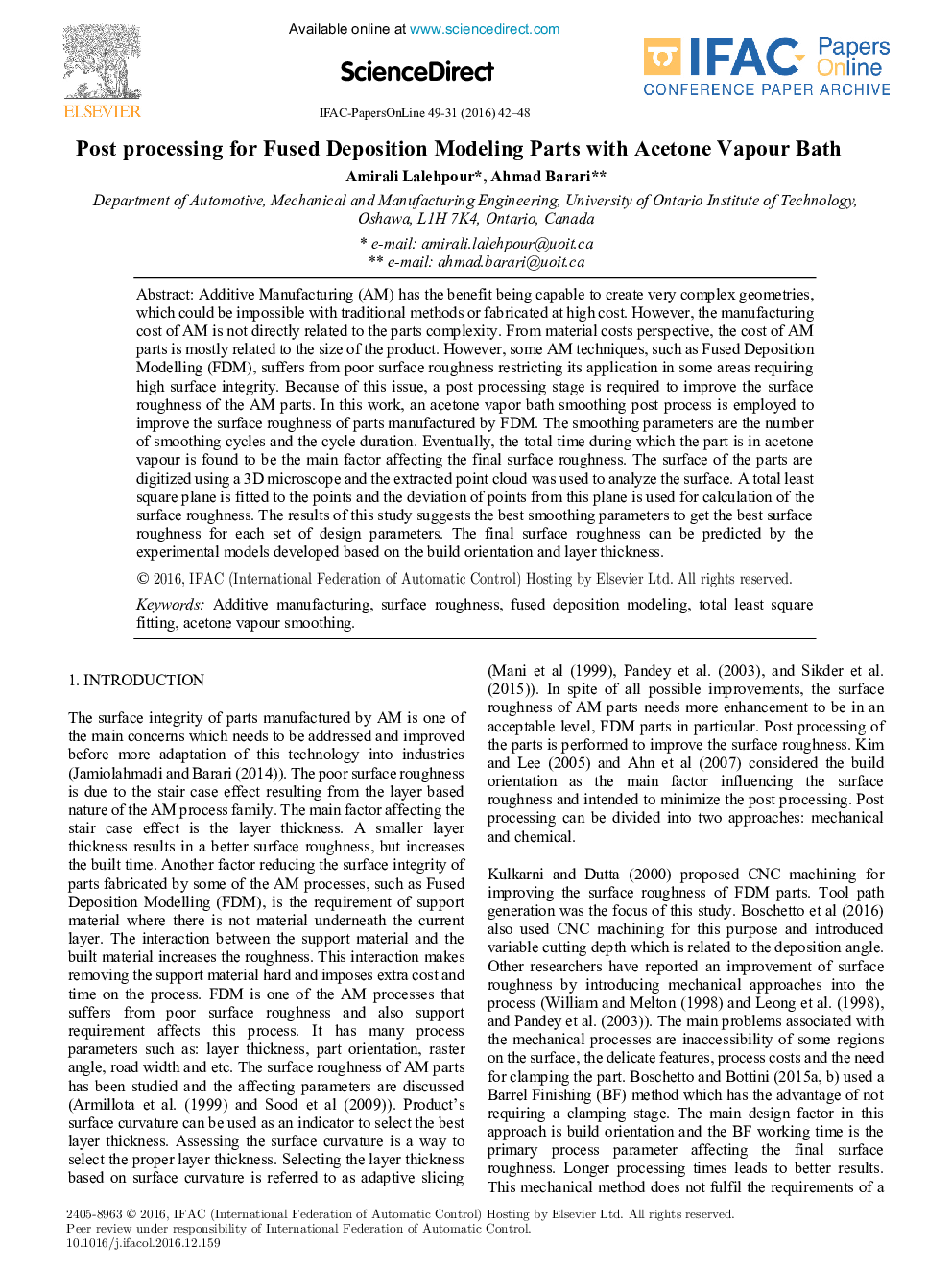| Article ID | Journal | Published Year | Pages | File Type |
|---|---|---|---|---|
| 5002254 | IFAC-PapersOnLine | 2016 | 7 Pages |
Abstract
Additive Manufacturing (AM) has the benefit being capable to create very complex geometries, which could be impossible with traditional methods or fabricated at high cost. However, the manufacturing cost of AM is not directly related to the parts complexity. From material costs perspective, the cost of AM parts is mostly related to the size of the product. However, some AM techniques, such as Fused Deposition Modelling (FDM), suffers from poor surface roughness restricting its application in some areas requiring high surface integrity. Because of this issue, a post processing stage is required to improve the surface roughness of the AM parts. In this work, an acetone vapor bath smoothing post process is employed to improve the surface roughness of parts manufactured by FDM. The smoothing parameters are the number of smoothing cycles and the cycle duration. Eventually, the total time during which the part is in acetone vapour is found to be the main factor affecting the final surface roughness. The surface of the parts are digitized using a 3D microscope and the extracted point cloud was used to analyze the surface. A total least square plane is fitted to the points and the deviation of points from this plane is used for calculation of the surface roughness. The results of this study suggests the best smoothing parameters to get the best surface roughness for each set of design parameters. The final surface roughness can be predicted by the experimental models developed based on the build orientation and layer thickness.
Related Topics
Physical Sciences and Engineering
Engineering
Computational Mechanics
Authors
Amirali Lalehpour, Ahmad Barari,
